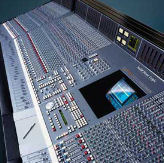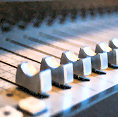 The EMI/iTunes deal to offer DRM-less files at higher quality, for a higher price, raises a question best addressed in Slate.com’s Are iTunes’ Premium Downloads Worth It?
The EMI/iTunes deal to offer DRM-less files at higher quality, for a higher price, raises a question best addressed in Slate.com’s Are iTunes’ Premium Downloads Worth It?
iTunes will soon offer premium music files, which come without copy protection and have a bitrate of 256 kbps instead of the usual 128 kbps. The luxury tracks will cost 30 cents more than the standard downloads. Will people be able to hear the difference?
I’ll spoil the ending: Most listeners don’t notice a difference between the two encoding rates. That conclusion should interest indie artists who offer downloadable music. The question of which bit rate to use seems important, but if most listeners can’t tell the difference between files encoded at 128KBps and 256KBps, can it really matter?
Depending on your music and your situation, it might. The most important questions to ask yourself are:
How important is the high-frequency detail in your music? MP3 (and AAC, WMV, et.al.) encoding at lower bit rates severely affects high frequencies. If your music is treble-heavy, its quality will likely suffer noticeably at anything below 160KBps.
How much bandwidth do you have? Audio compression is a classic quality/size tradeoff. Lower bit rates yield smaller files, which transfer quickly and use fewer resources. But they don’t sound as good.
How discriminating are your fans? Some folks turn their nose up at bit rates less than 160KBps. Especially if you record classical music, or music in any genre with intricate detail, your listeners may be accustomed to, and expect, higher bit rates.
Ultimately, though, your ears are always the best way to judge how your music sounds, and this is true of choosing a compression bit rate. So to better understand the options, why not perform a listening test? Some examples (two of which are linked from the Slate article above):
The consensus is that 128KBps or 160KBps is sufficient for most music and listeners. But test your own music at different rates, and be sure you’re happy with what you offer your listeners.
– – –
[Aside: if listeners won’t notice a difference between Apple’s encoding rates, Bob Lefsetz raises another question: What was Steve Jobs thinking?
Steve Jobs makes a deal for variable pricing with EMI, breaking his FOUR YEAR STANCE!! That was the beauty of the iTunes Store, one price for everything, no confusion. Didn’t Mr. Jobs warn the labels not to confuse the customer by having variable prices?
I think he’s spot on that the real story behind the dropped DRM is Apple’s concern over EU pressure to license Fairplay.]
Tags: MP3-compression
 What are some reasons that a mix collapses when summed to mono?
What are some reasons that a mix collapses when summed to mono?

 A good general rule for EQ: Make your cuts narrow and your boosts wide.
A good general rule for EQ: Make your cuts narrow and your boosts wide. Whether via search or link from a web forum, every few months I find myself back at the fantastic Sound On Sound article
Whether via search or link from a web forum, every few months I find myself back at the fantastic Sound On Sound article  The EMI/iTunes
The EMI/iTunes  Most often, we use compressors to tame the dynamics of a recording. Like all recording tools, though, compressors have less-obvious uses for shaping sound.
Most often, we use compressors to tame the dynamics of a recording. Like all recording tools, though, compressors have less-obvious uses for shaping sound. For those of us on a budget, “cheap” ribbon mics (referenced in the last post) make for a great introduction to recording with ribbons.
For those of us on a budget, “cheap” ribbon mics (referenced in the last post) make for a great introduction to recording with ribbons.